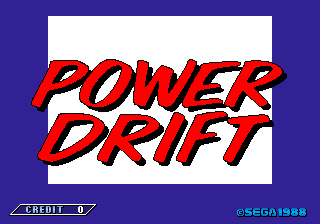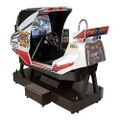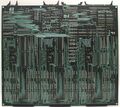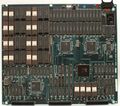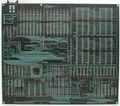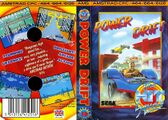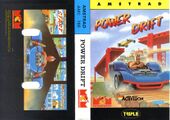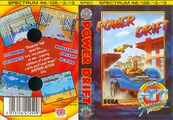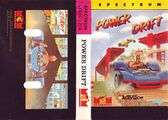Difference between revisions of "Power Drift"
From Sega Retro
m (Text replacement - "Dempa" to "Dempa Micomsoft") |
Hyperspeed34 (talk | contribs) |
||
| Line 2: | Line 2: | ||
{{Bob | {{Bob | ||
| bobscreen=Power Drift Title.png | | bobscreen=Power Drift Title.png | ||
| − | | publisher={{company|[[Sega]]|system=YBD}} | + | | publisher={{company|[[Sega Enterprises, Ltd.]]|system=YBD}} |
{{company|[[Asmik]]|system=PCE}} | {{company|[[Asmik]]|system=PCE}} | ||
{{company|[[Activision]]|system=Amiga,CPC,ST,C64,MSX,Spectrum|region=UK}} | {{company|[[Activision]]|system=Amiga,CPC,ST,C64,MSX,Spectrum|region=UK}} | ||
Latest revision as of 02:30, 8 November 2024
- For the Saturn version, see Sega Ages Power Drift.
| Power Drift | ||||||||||||||||||||||||||||||||||||||||||||||||||||||||||||||||||||||||||||||||||||||||||||||||||||||||||||||||
|---|---|---|---|---|---|---|---|---|---|---|---|---|---|---|---|---|---|---|---|---|---|---|---|---|---|---|---|---|---|---|---|---|---|---|---|---|---|---|---|---|---|---|---|---|---|---|---|---|---|---|---|---|---|---|---|---|---|---|---|---|---|---|---|---|---|---|---|---|---|---|---|---|---|---|---|---|---|---|---|---|---|---|---|---|---|---|---|---|---|---|---|---|---|---|---|---|---|---|---|---|---|---|---|---|---|---|---|---|---|---|---|---|
| System(s): Sega Y Board, Amiga, Amstrad CPC, Atari ST, Commodore 64, IBM PC, MSX, PC Engine, ZX Spectrum | ||||||||||||||||||||||||||||||||||||||||||||||||||||||||||||||||||||||||||||||||||||||||||||||||||||||||||||||||
| Publisher: Sega Enterprises, Ltd. Asmik Activision (UK) MCM Software (ES) | ||||||||||||||||||||||||||||||||||||||||||||||||||||||||||||||||||||||||||||||||||||||||||||||||||||||||||||||||
| Developer: Studio 128[1][2] Copya System Software Studios New Frontier | ||||||||||||||||||||||||||||||||||||||||||||||||||||||||||||||||||||||||||||||||||||||||||||||||||||||||||||||||
| Genre: Racing | ||||||||||||||||||||||||||||||||||||||||||||||||||||||||||||||||||||||||||||||||||||||||||||||||||||||||||||||||
| Number of players: 1 | ||||||||||||||||||||||||||||||||||||||||||||||||||||||||||||||||||||||||||||||||||||||||||||||||||||||||||||||||
|
Power Drift (パワードリフト) is a 1988 kart racing game developed for the Sega Y Board arcade platform. It was designed by Yu Suzuki and developed by his team at Sega AM2.
Contents
Gameplay
Like many games for the hardware, Power Drift makes heavy use of sprite scaling and rotation, often referred to as Super Scaler technology. It is one of the more ambitious efforts for what is considered at its core to be "2D" hardware, attempting not only to simulate driving down a road (like OutRun), but hills and bridges, as well as a camera which can tilt as the player drives around corners.
In Power Drift the player chooses one of twelve characters and attempts to beat them over the course of five "courses", labeled A through E, each with five tracks. Unlike most Sega arcade racers which rely on an in-game timer to determine whether a user has failed, in Power Drift the player must finish third or above in a race to continue playing.
If the player finishes first in all races, a sixth "special" track is unlocked, where the player has the option to play as the F-14 Tomcat from After Burner (A, C, E) or the motorbike from Super Hang-On (B, D).
Drivers
| Michael | |
|---|---|
| Keith | |
| Jason | |
| Storoganoph | |
| Tom | |
| Mark | |
| Jimmy | |
| Emily | |
| Lucy | |
| Jeronimo | |
| Harry | |
| Eric | |
History
Power Drift was the first kart racing game, predating Nintendo's Super Mario Kart by four years. While less known in America, it was critically and commercially successful in Europe, according to gaming magazines of its time.
Improving on the "Super Scaler" technology and road scrolling effects of Hang-On, Out Run and After Burner, it created all of its track layouts with flat bitmaps to simulate a wholly 3D space using strictly 2D technology, making much use of sprite-scaling and rotation to create a 3D effect.[9]
Legacy
Unlike other works by Yu Suzuki, such as Space Harrier, OutRun, and After Burner, Power Drift skipped most home consoles and did not appear on a home Sega system until the release of a Sega Saturn conversion in 1998 (as Sega Ages Power Drift). It was instead ported to the PC Engine in Japan (by Asmik Ace Entertainment), and a variety of home computers in North America and Europe, including the Amiga, Amstrad CPC, Atari ST, Commodore 64, IBM PC, MSX, PC Engine and ZX Spectrum. All computer versions sacrifice many of the sprite effects, and though some were well received by the gaming press at the time, the limitations turn these versions into very different games.
The arcade version of Power Drift was also included in Yu Suzuki Game Works Vol. 1 for the Sega Dreamcast. The arcade version has never been re-released in the western world.
Unusual for Sega's "Super Scaler" arcade games, Power Drift was never ported to the Mega Drive console. Dempa Micomsoft was planning to port the game to the Mega Drive[10], but it was later moved to the Sega CD, before the project was eventually cancelled[9]. When Dempa's license expired, Sega briefly worked on a Sega 32X version[11], which also did not see the light of day.
The Sonic Drift games for the Sega Game Gear handheld console were based on the gameplay of Power Drift, but with characters from the Sonic the Hedgehog series.[12]
A remastered version was released by M2 and Sega for the Nintendo 3DS as a part of M2's 3D Classics line under the name 3D Power Drift. This version is a port of the arcade version but with added functionality, such as 3D stereoscopic support and customizable controls.
Versions
Amiga and Atari ST versions
The Amiga and Atari ST versions were programmed simultaneously by Zareh Z. K. Johannes of Software Studios, better known by his alias, "ZZKJ". It is in some ways an evolution of ZZKJ's previous project; the Amiga and Atari ST ports of Super Hang-On.
Sega failed to give the team any of the arcade game's assets or source code, meaning artist Saul Marchese had to take "hundreds" of photos of the arcade machine in action, and watch footage of someone playing the game to the end[13]. Due to the limitation of 16 colours per sprite, DEGAS Elite was used as the primary graphics editor[13].
Unlike Y Board hardware, both the Amiga and ST are incapable of natively scaling sprites, so to create the illusion of depth, all graphics had to be rendered at multiple sizes. A program written by ZZKJ allowed these sprites to be generated on the fly, with Saul touching them up before use[13].
The Amiga port is spread across two floppy disks, while the Atari ST port needs three. To reduce the amount of disk swapping, course graphics were stored on disk 3[14]. Atari ST users also have to choose between music and sound effects, while the Amiga supports both simultaneously.
Code was written to allow Amiga and Atari ST users to compete against each other by using a null modem cable[14], but this feature was not implemented in the final product. Its existence would have made Power Drift the only Sega-to-computer port to adopt this feature, and indeed one of a small handful of games in the entire Amiga/Atari ST shared library to support it.
While the arcade version of the game targets 30FPS at all times, Power Drift on the Amiga and ST averages 6-7[15]. Attempts to mitigate the choppy nature of play involved the manipulation of up to 50 sprites per frame[14].
The Amiga version is optimised to some degree for systems equipped with Motorola 68020 processors[16]. At the time, only the Amiga 2500/20 from 1988 came with this processor out of the box - other Amiga computers would have to be upgraded.
Commodore 64 version
The Commodore 64 version of Power Drift was written by Chris Butler, following his conversion of Thunder Blade and being subsequently poached by Activision to work on new titles[17]. Work began in February 1989 with a deadline of September, the contract had a £250 penalty clause for every week missed past this deadline[17].
The Commodore 64 version loads in one go, devoting roughly 32kB to graphics, 20kB to the game and 6kB to music[17]. A further 1-3kB is reserved for "emergency backup purposes"[18].
The game was written on an Amstrad PCW running WordStar, before being assembled by Avaset X-ASM[18]. Priority was given to eliminating the "wobble" of graphics as they move into the screen (as seen with Butler's conversions of Thunder Blade and Space Harrier)[18].
The development team only had the Power Drift cabinet for four months before it was sent elsewhere[18].
ZX Spectrum version
Power Drfit on the Spectrum was created by Software Studios, with programming by John Mullins and graphics by Clive Paul. On a 48K Spectrum, Power Drift is a multi-load game with each circuit being loaded individually[19], but if played on a 128K machine, everything loads in one go (and includes better music and sound effects).
Again, Sega did not provide the team with source code, meaning the game was created by watching videos and analysing screenshots[20].
The graphics are reduced to simple OutRun-style roads, where corners and hills are simulated, but the horizon is static and the camera does not rotate. The screen updates at about 8-10 frames per second, owing to the way the road moves up and down[20]. For this reason, Power Drift is slower than Mullins' previous Spectrum conversion, WEC Le Mans[20].
Music was developed on an Atari ST[20].
Production credits
- Main article: Power Drift/Production credits.
Magazine articles
- Main article: Power Drift/Magazine articles.
Promotional material
- Main article: Power Drift/Promotional material.
Photo gallery
Physical scans
Y Board version
| Sega Retro Average | |||||||||||||||||||
|---|---|---|---|---|---|---|---|---|---|---|---|---|---|---|---|---|---|---|---|
|
| 79 | |
|---|---|
| Based on 3 reviews | |
| Y Board, JP | ||||
|---|---|---|---|---|
Amiga version
| Sega Retro Average | ||||||||||||||||||||||||||||||||||||||||||||||||||||||||||||||||||||||||||||||||||||
|---|---|---|---|---|---|---|---|---|---|---|---|---|---|---|---|---|---|---|---|---|---|---|---|---|---|---|---|---|---|---|---|---|---|---|---|---|---|---|---|---|---|---|---|---|---|---|---|---|---|---|---|---|---|---|---|---|---|---|---|---|---|---|---|---|---|---|---|---|---|---|---|---|---|---|---|---|---|---|---|---|---|---|---|---|
|
| 74 | |
|---|---|
| Based on 16 reviews | |
| Amiga, UK (The Hit Squad) |
|---|
Amstrad CPC version
| Sega Retro Average | ||||||||||||||
|---|---|---|---|---|---|---|---|---|---|---|---|---|---|---|
|
| 68 | |
|---|---|
| Based on 2 reviews | |
| Amstrad CPC, UK (The Hit Squad) |
|---|
Atari ST version
| Sega Retro Average | ||||||||||||||||||||||||||||||||||||||||||||
|---|---|---|---|---|---|---|---|---|---|---|---|---|---|---|---|---|---|---|---|---|---|---|---|---|---|---|---|---|---|---|---|---|---|---|---|---|---|---|---|---|---|---|---|---|
|
| 74 | |
|---|---|
| Based on 8 reviews | |
| Atari ST, UK (The Hit Squad) |
|---|
Commodore 64 version
| Sega Retro Average | |||||||||||||||||||||||||||||||||||||||||||||||||||||||||||||||||||||
|---|---|---|---|---|---|---|---|---|---|---|---|---|---|---|---|---|---|---|---|---|---|---|---|---|---|---|---|---|---|---|---|---|---|---|---|---|---|---|---|---|---|---|---|---|---|---|---|---|---|---|---|---|---|---|---|---|---|---|---|---|---|---|---|---|---|---|---|---|---|
|
| 81 | |
|---|---|
| Based on 13 reviews | |
| Commodore 64, UK (The Hit Squad) |
|---|
| Commodore 64, IT |
|---|
|
IBM PC version
| Sega Retro Average | |||||||||||||||||||
|---|---|---|---|---|---|---|---|---|---|---|---|---|---|---|---|---|---|---|---|
|
| 59 | |
|---|---|
| Based on 3 reviews | |
MSX version
| MSX, ES |
|---|
|
PC Engine version
| Sega Retro Average | |||||||||||||||||||||||||||||||||||||||||||||||||
|---|---|---|---|---|---|---|---|---|---|---|---|---|---|---|---|---|---|---|---|---|---|---|---|---|---|---|---|---|---|---|---|---|---|---|---|---|---|---|---|---|---|---|---|---|---|---|---|---|---|
|
| 72 | |
|---|---|
| Based on 9 reviews | |
| PC Engine, JP |
|---|
ZX Spectrum version
| Sega Retro Average | |||||||||||||||||||||||||||||||||||||||
|---|---|---|---|---|---|---|---|---|---|---|---|---|---|---|---|---|---|---|---|---|---|---|---|---|---|---|---|---|---|---|---|---|---|---|---|---|---|---|---|
|
| 72 | |
|---|---|
| Based on 7 reviews | |
| ZX Spectrum, UK (The Hit Squad) |
|---|
Unreleased versions

|
| Power Drift |
|---|
| System(s): Sega Mega Drive, Sega Mega-CD |
| Publisher: Sega |
| Planned release date(s): |
The game was apparently due to be ported to the Mega Drive and Mega-CD. The Mega Drive version was mentioned in the December 1990 issue of Mean Machines, with an expected release date of Easter 1991, and the Mega-CD version was announced shortly before the system launched, with an expected release of "late Spring" 1992 (April/May). Neither version ever came out.
Technical information
ROM dump status
| System | Hash | Size | Build Date | Source | Comments | |||||||||
|---|---|---|---|---|---|---|---|---|---|---|---|---|---|---|
| ? |
|
512kB | Card (JP) | |||||||||||
| ? |
|
512kB | Card (JP) | (Alt) |
External links
References
- ↑ Sega Magazine, "1997-02 (1997-02)" (JP; 1997-01-13), page 24
- ↑ https://shmuplations.com/afterburner/ (Wayback Machine: 2023-11-13 22:25)
- ↑ Game Machine, "1988-08-15" (JP; 1988-08-15), page 12
- ↑ Mega Drive Fan, "June 1992" (JP; 1992-05-08), page 75
- ↑ 5.0 5.1 5.2 5.3 5.4 5.5 5.6 Zero, "November 1989" (UK; 1989-10-12), page 12
- ↑ 6.0 6.1 6.2 6.3 6.4 6.5 6.6 ACE, "December 1989" (UK; 1989-11-xx), page 93
- ↑ File:CGW US 072.pdf, page 6
- ↑ Computer & Video Games, "August 1990" (UK; 1990-07-16), page 13
- ↑ 9.0 9.1 http://www.hardcoregaming101.net/powerdrift/powerdrift.htm
- ↑ Beep! MegaDrive, "September 1989" (JP; 1989-XX-XX), page 74
- ↑ GameFan, "Volume 3, Issue 3: March 1995" (US; 1995-xx-xx), page 114
- ↑ http://toucharcade.com/2014/01/03/sonic-all-stars-racing-transformed-review-an-all-star-sequel/
- ↑ 13.0 13.1 13.2 The One, "October 1989" (UK; 1989-09-xx), page 34
- ↑ 14.0 14.1 14.2 The One, "October 1989" (UK; 1989-09-xx), page 33
- ↑ The One, "October 1989" (UK; 1989-09-xx), page 32
- ↑ 16.0 16.1 Amiga Computing, "Volume 2, Number 8: January 1990" (UK; 19xx-xx-xx), page 35
- ↑ 17.0 17.1 17.2 Zzap!64, "October 1989" (UK; 1989-xx-xx), page 24
- ↑ 18.0 18.1 18.2 18.3 Zzap!64, "October 1989" (UK; 1989-xx-xx), page 25
- ↑ File:YourSinclair UK 091.pdf, page 59
- ↑ 20.0 20.1 20.2 20.3 File:YourSinclair UK 091.pdf, page 58
- ↑ Commodore User, "October 1988" (UK; 1988-09-26), page 97
- ↑ Power Play, "3/89" (DE; 1989-02-13), page 60
- ↑ Sinclair User, "October 1988" (UK; 1988-09-18), page 82
- ↑ http://amr.abime.net/review_31948
- ↑ 25.0 25.1 ACE, "December 1989" (UK; 1989-11-xx), page 92
- ↑ Amiga Format, "December 1989" (UK; 1989-11-09), page 42
- ↑ Amiga Joker, "Januar '90" (DE; 1989-12-29), page 10
- ↑ Amiga Power, "January 1992" (UK; 1991-12-19), page 106
- ↑ 29.0 29.1 Aktueller Software Markt, "Dezember 1989" (DE; 1989-1x-xx), page 53
- ↑ Commodore Computing International, "January 1990" (UK; 1990-xx-xx), page 51
- ↑ Commodore User, "November 1989" (UK; 1989-10-23), page 36
- ↑ Computer & Video Games, "November 1989" (UK; 1989-10-16), page 16
- ↑ 33.0 33.1 The Games Machine, "December 1989" (UK; 1989-11-09), page 90
- ↑ 34.0 34.1 Génération 4, "Décembre 1989" (FR; 1989-1x-xx), page 14
- ↑ Megazone, "June 1990" (AU; 1990-0x-xx), page 35
- ↑ The One, "November 1989" (UK; 1989-10-xx), page 51
- ↑ Power Play, "1/90" (DE; 1989-12-15), page 30
- ↑ Zero, "December 1989" (UK; 1989-1x-xx), page 26
- ↑ Zzap!64, "January 1990" (UK; 19xx-xx-xx), page 71
- ↑ Amstrad Action, "December 1989" (UK; 1989-11-09), page 50
- ↑ 41.0 41.1 The Games Machine, "January 1990" (UK; 1989-12-11), page 21
- ↑ Aktueller Software Markt, "Februar 1990" (DE; 1990-xx-xx), page 57
- ↑ Micromanía (segunda época), "Marzo 1990" (ES; 1990-0x-xx), page 41
- ↑ The One for ST Games, "November 1991" (UK; 1991-10-26), page 85
- ↑ ST Action, "January 1990" (UK; 19xx-xx-xx), page 50
- ↑ ST Format, "January 1990" (UK; 1989-12-21), page 62
- ↑ Zero, "January 1990" (UK; 19xx-xx-xx), page 89
- ↑ 64'er, "März 1990" (DE; 1990-02-16), page 121
- ↑ Commodore Computing International, "January 1990" (UK; 1990-xx-xx), page 50
- ↑ Commodore Force, "August 1993" (UK; 1993-06-24), page 18
- ↑ Commodore Format, "December 1991" (UK; 1991-11-21), page 49
- ↑ Commodore User, "November 1989" (UK; 1989-10-23), page 38
- ↑ Datormagazin, "4-18 Januari 1990" (SE; 1990-01-04), page 15
- ↑ New Computer Express, "November 4, 1989" (UK; 1989-11-02), page 60
- ↑ Your Commodore, "January 1990" (UK; 1989-12-01), page 32
- ↑ Zzap!64, "September 1991" (UK; 1991-08-08), page 73
- ↑ Zzap!, "Novembre 1989" (IT; 1989-xx-xx), page 16
- ↑ Computer & Video Games, "September 1990" (UK; 1990-08-16), page 54
- ↑ Joystick, "Septembre 1990" (FR; 1990-0x-xx), page 167
- ↑ Tilt, "Septembre 1990" (FR; 1990-0x-xx), page 90
- ↑ ACE, "August 1990" (UK; 1990-07-xx), page 60
- ↑ Aktueller Software Markt, "Juni/Juli 1990" (DE; 1990-05-25), page 64
- ↑ Complete Guide to Consoles, "Volume IV" (UK; 1990-11-xx), page 50
- ↑ GameFan, "Volume 1, Issue 2: December 1992" (US; 1992-xx-xx), page 9
- ↑ The Games Machine, "August 1990" (UK; 1990-07-19), page 52
- ↑ Génération 4, "Juin 1990" (FR; 1990-0x-xx), page 65
- ↑ Joystick, "Juin 1990" (FR; 1990-05-xx), page 86
- ↑ Power Play, "8/90" (DE; 1990-07-13), page 129
- ↑ Zzap!, "Novembre 1990" (IT; 1990-xx-xx), page 58
- ↑ Crash, "December 1989" (UK; 1989-11-16), page 70
- ↑ Crash, "January 1991" (UK; 1991-12-27), page 63
- ↑ Micromanía (segunda época), "Enero 1990" (ES; 19xx-xx-xx), page 37
- ↑ Svet Igara, "Januar 1990" (YU; 1990-xx-xx), page 14
- ↑ Sinclair User, "December 1989" (UK; 1989-11-18), page 39
- ↑ Sinclair User, "December 1991" (UK; 1991-11-18), page 49
- ↑ Your Sinclair, "January 1990" (UK; 1989-12-18), page 23
- ↑ Electronic Gaming Monthly, "December 1991" (US; 1991-1x-xx), page 122
- ↑ Mega Power, "February 1994" (UK; 1994-01-20), page 10
NEC Retro has more information related to Power Drift
|
| Power Drift | |
|---|---|
|
Main page | Comparisons | Credits | Hidden content | Magazine articles | Reception | Promotional material
Videos: (1988) | (198x) | |
- 1 player games
- All arcade games
- Y Board games
- 1988 Y Board games
- All 1988 games
- PC Engine games
- UK Amiga games
- All UK games
- Amiga games
- All racing games
- 1989 Amiga games
- All 1989 games
- UK Atari ST games
- Atari ST games
- 1989 Atari ST games
- ES Amstrad CPC games
- All ES games
- UK Amstrad CPC games
- Amstrad CPC games
- 1989 Amstrad CPC games
- US Commodore 64 games
- All US games
- UK Commodore 64 games
- IT Commodore 64 games
- All IT games
- Commodore 64 games
- 1989 Commodore 64 games
- ES ZX Spectrum games
- UK ZX Spectrum games
- ZX Spectrum games
- 1989 ZX Spectrum games
- US IBM PC games
- UK IBM PC games
- IBM PC games
- 1989 IBM PC games
- ES MSX games
- MSX games
- 1989 MSX games
- All games
- Old-style rating (amigaaction)
- Rating without PDF source
- Update ratings template
- 1 old ratings
- No title screen
- Unreleased Mega Drive games
- Unreleased Mega-CD games
- All unreleased games
- Old technical information
- Power Drift
